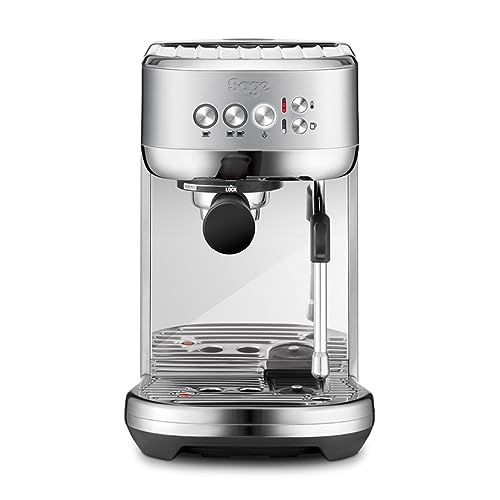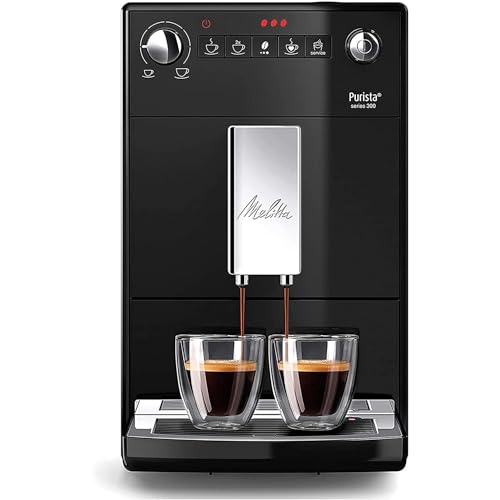강연강좌 Espresso Maker: 10 Things I'd Like To Have Learned Sooner
페이지 정보

본문
 retro espresso Maker Maker - A Must-Have For Home Baristas
retro espresso Maker Maker - A Must-Have For Home BaristasEspresso is an intense, dark drink that is made by forcing hot coffee through finely ground, tightly packed coffee grounds. It is the basis for many popular coffee drinks at the cafe.
A barista espresso machine, also known as an "espresso maker" controls a number of variables to produce a great cup. This includes the temperature of the water as well as its pressure and how tightly packed the coffee is.
Origins
The espresso machine is a device that uses high pressure to force small amounts of water near boiling through finely ground beans. The resulting beverage is much stronger than drip coffee, is more concentrated, and served in smaller cups. This is an excellent choice for those who want an intense cup of coffee but need it fast!
In the 19th century, the first espresso machines were created. Back then, coffee was a huge industry, but the process of brewing it took too long. People were impatient and wanted just a quick cup of tea!
In 1884, Angelo Moriondo from Turin created the first coffee machine. It held a name that was "New steam machine for the economical and instantaneous production of coffee beverage Method A. Moriondo."
The Milanese manufacturers Luigi Bezzerra and Desiderio Pavoni made improvements and adaptations to this machine. They introduced the portafilter and several brewheads, being other inventions that are still associated with espresso makers today. Their machine was named the Ideale and it wowed audiences at the 1906 Milan Fair. Nine out of 10 Italian homes have Moka Pots. Moka Pot.
Variations
Espresso is more concentrated in flavor than coffee. It is more flavorful than. It works well with milk to create café favourites like lattes or cappuccinos. Its strong flavor is also evident in baked goods recipes and even marinades.
There are four types of espresso machines: semi-automatic, manual lever, super-automatic and. Each type uses a different method of extracting espresso.
A manual lever machine utilizes mechanical pistons that press water through the ground. It's a good combination of the human hand and mechanized consistency. You'll still need to grind, tamp, and pull shot yourself however you are able to control the temperature and pressure of water much better.
Moka pots, another manual espresso maker, operate similar to modern espresso machines, which are powered by a pump. In an airtight container, boiling water produces steam. This steam is then forced into a basket of ground coffee and through an aluminum filter into the top espresso machines cup. They're less expensive than a large espresso machine, however they're able to only hold up to 1-1.5 bars of pressure, which is lower than the ideal setting for brewing espresso.
Ingredients
Espresso makers can help baristas at home make cafe-style drinks such as cappuccinos and lattes. You can also add flavorful extracts or syrups to espresso shots to create an indulgence drink like the espresso martini.
To enjoy a delicious cup of espresso, you need high-quality beans, fresh milk and sugar. Look for coffee beans specifically marked for espresso, and then grind them finely so that you get a consistent extraction. You can play around with different roasts until you discover the one you like best budget espresso machine.
You'll also require a burr grinder, which grinds the beans into a consistent texture. The espresso machine has a portafilter which holds the grounds, and the tamper is used to pack the coffee tightly.
You'll also need an espresso cup set, as well as steamer to create the silky aerated-milk typical of espresso drinks. Some machines include steam wands that assist in the process. It is also essential to descale the machine. This involves running a solution of vinegar and water through the system.
Techniques
Espresso Brewing is the process of creating pressure to quickly extract intense flavor from finely ground, dark-roasted coffee that is tightly packed into a 'puck. This method of brewing results in a strong espresso shot known as espresso. If espresso is brewed correctly, it has a luxurious crema on top.
As opposed to the Moka Express that uses heat to filter water through coarsely ground coffee most espresso makers use highly pressurized water pushed through small grounds under high heat. This results in an espresso-like beverage that can be dilute with water or milk to make other drinks such as lattes and cappuccinos.
The Moka Express is a cheap easy-to-use appliance. Other espresso machines are more complicated, costly and come with a variety of drinks. The most well-known models, however, are Italian-designed lever machines that utilize spring-loaded arms to dispense hot water from a cylinder to the portafilter. A barista using such a machine can control the time when he pulls the shot, while adjusting factors like the size of the grind and the temperature of the water on a shot-by-shot basis to get the most effective results. These machines were crucial in bringing espresso to wider recognition across Italy and Europe.
Equipment
A good espresso maker has the ability to extract soluble as well as insoluble solids from tightly packed, finely ground coffee. This process is assisted by controlled variables and pressure such as temperature and grind size. Then there's the flavor which is influenced by a host of factors including the beans and the method in which they're handled and the way they're brewed.
There are a variety of espresso machines, however the semiautomatic is most commonly used. It utilizes an electric pump to force the water through the grounds. It also permits users to perform the grinding and tamping. These machines tend to be the most affordable, but they're not as consistent as spring pistons or other manual designs.
 The lever models that are more expensive have the calibrated cylinder which does all the work. They are less prone to error than spring piston machines however, they require some skill to operate properly. They usually require a lot of maintenance, Retro espresso Maker which means you have to heat up and remove the portafilter and the piston every time.
The lever models that are more expensive have the calibrated cylinder which does all the work. They are less prone to error than spring piston machines however, they require some skill to operate properly. They usually require a lot of maintenance, Retro espresso Maker which means you have to heat up and remove the portafilter and the piston every time.- 이전글Emergency Boarding Up Service Tools To Make Your Daily Lifethe One Emergency Boarding Up Service Trick That Everybody Should Be Able To 25.02.04
- 다음글The Most Effective Reasons For People To Succeed In The Link Collection Site Industry 25.02.04
댓글목록
등록된 댓글이 없습니다.
